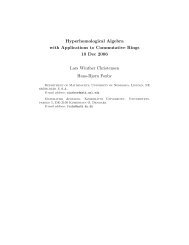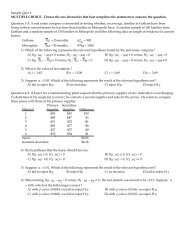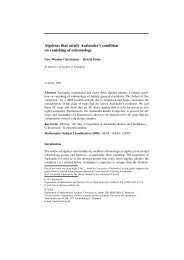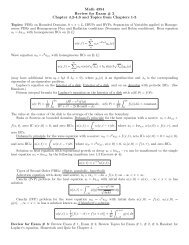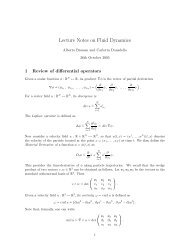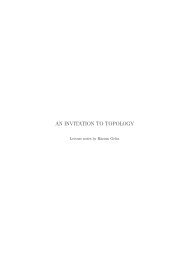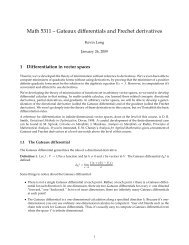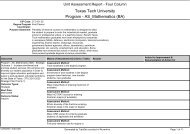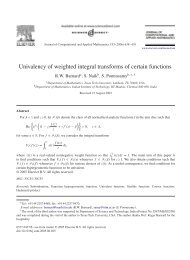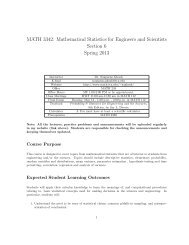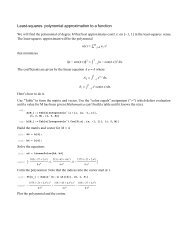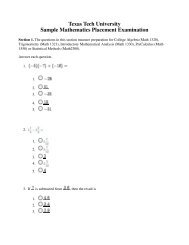QUANTUM MECHANICS AND NON-ABELIAN THETA FUNCTIONS ...
QUANTUM MECHANICS AND NON-ABELIAN THETA FUNCTIONS ...
QUANTUM MECHANICS AND NON-ABELIAN THETA FUNCTIONS ...
Create successful ePaper yourself
Turn your PDF publications into a flip-book with our unique Google optimized e-Paper software.
<strong>QUANTUM</strong> <strong>MECHANICS</strong> <strong>AND</strong> GENERALIZED <strong>THETA</strong> <strong>FUNCTIONS</strong> 23a rigorous mathematical formulation. It is thought as an average of theWilson line computed over all connections that interpolate between A 1 andA 2 .It is the framework of Chern-Simons theory that motivates the skein theoreticapproach to classical theta functions outlined in Section 3.2. Let usexplain this in more detail.The moduli space of flat U(1)-connections on the torus is itself a torus,the Jacobian. The moduli space is canonically homeomorphic to the originaltorus in the following way. Let p 0 be the point on the original torus that isthe image of the origin under the quotient map C → C/Z + Zτ. Thinkingof the Jacobian as the moduli space of holomorphic topologically trivial linebundles, the homeomorphism in question maps a point p on the originaltorus to the line bundle O(p − p 0 ). Or, when viewing the Jacobian as acharacter variety, this homeomorphism maps the point (x,y) on the originaltorus to the U(1)-representation of the fundamental group that maps (1,0)to e 2πix and (0,1) to e 2πiy .The tangent space to this torus is two dimensional; viewing it as givenby cohomology classes of u(1)-valued 1-forms, it has a basis consisting ofdx and dy, which can be identified with the tangent vectors to the torus∂∂x and ∂ ∂y. Under this identification, we see that a complex structure onthe original torus induces exactly the same complex structure on the modulispace.A rigid structure on the original torus gives rise to a decomposition of thetangent space to the moduli space into a sum of two Lagrangian subspaces.To fit in the framework of section 3.2, we can exponentiate these Lagrangiansubspaces to obtain a rigid structure on the moduli space, which happensto be the same as the rigid structure on the original torus.The Chern-Simons line bundle over the moduli space is just the one fromSection 3.1, so in this case the theta functions are the classical theta functions.The Wilson lines can be quantized either by using one of the classicalmethods for quantizing the torus, or they can be quantized using the Feynmanpath integrals as above. The Feyman path integral approach allows thelocalization of the computations to small balls, in which a single crossingshows up. Witten [29] has explained that in each such ball skein relationshold, in this case the skein relations from Figure 2, which compute the linkingnumber. As such the path integral quantization gives rise to the skeintheoretic model.On the other hand, Witten’s quantization is symmetric under the actionof the mapping class group of the torus, a property shared by Weyl quantization.And indeed, we have seen in section 3.2 that Weyl quantizationand the skein theoretic quantization are the same. For the group U(1), thecase of higher genus surfaces can be done in the same framework, and willbe explained in future work.4.2. Non-abelian theta functions from quantum groups. More thanjust the quantization of moduli spaces of connections on surfaces, Witten



